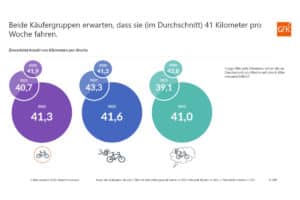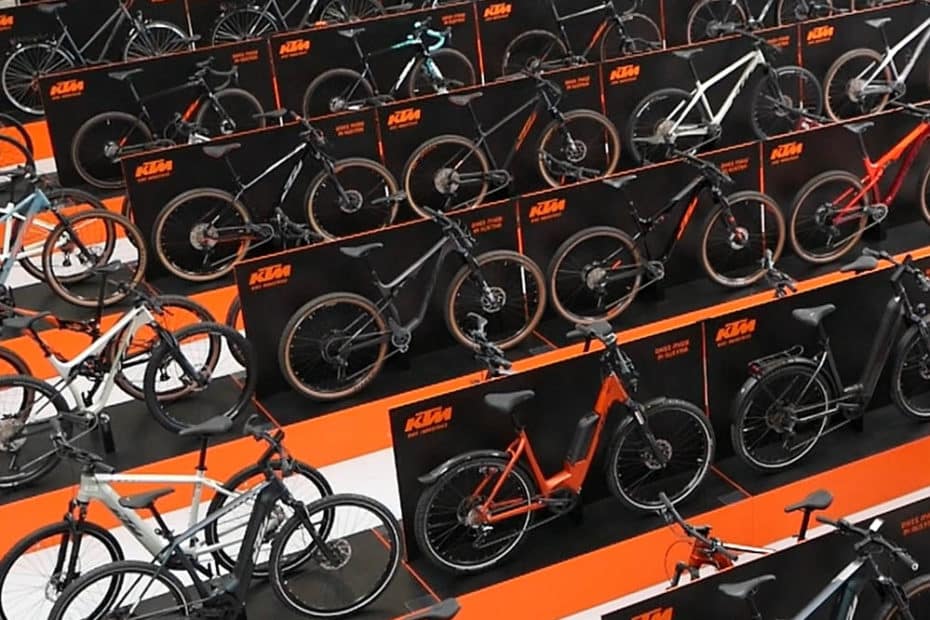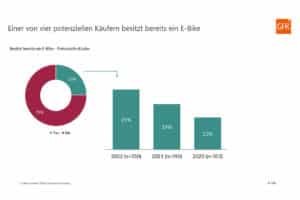We do a lot of things in our everyday lives without giving them a second thought. We just do it, maybe check off one point on a random list and move on to something else. But elsewhere, someone wants to know as much as possible about what we are doing so casually. Science or even companies have a burning interest in many of our decisions. For example, the question of how we actually buy an ebike.
Someone who regularly studies this and then sells its findings to retailers, for example, is the market research company GfK. Last year, it once again took a close look at people’s buying behaviour in five European countries. Not in just any countries, but in those that, according to statistics from Conebi, the European umbrella organisation of the bicycle, pedelec, parts and accessories industry, were the five nations with the most ebike sales in Europe in 2020. Besides Germany, these include the Netherlands, Belgium, France and Italy.
GfK has just published its statements in the E-Bike Monitor 2022. We could take a look at an abridged version of the study. These are the most important information from it.
1. What is the central finding of the E-Bike Monitor 2022?
2. Why do customers change brands when buying their second ebike?
3. Why do people ride an ebike?
4. How do people inform themselves before buying an ebike?
5. What influence does age have on buying behaviour?
6. Background to the E-Bike Monitor 2022
1. What is the central finding of the E-Bike Monitor 2022?
The trend towards ebikes is consolidating and their popularity is increasing. This is indicated above all by one figure in the study. It follows the motto: After the purchase is before the purchase. This is because 25 percent of Germans who are thinking about getting an ebike in the next twelve months already own at least one. In the previous edition of the E-Bike Monitor for 2021, the figure was still at 19 percent.
2. Why do customers change brands when buying their second ebike?
Whether the next ebike will be from the same manufacturer as bike number one is decided on the basis of experience with the current model. Somewhat surprisingly, those who change brands do not do so primarily because they are dissatisfied with their purchase. Instead, the decisive factor is the quality of the service. Dissatisfaction with the service motivates people to choose another brand most often.
3. Why do people ride an ebike?
Whether with ebike number one, two or 17 and regardless of the brand – people who enjoy cycling want to move first and foremost. According to GfK, we buy a bike because we want to be more active in everyday life. In addition, more and more people say that they plan to replace their car with an ebike. At least partially. Accordingly, it seems that we are already riding on two wheels quite often. Only slightly less than half of Germans use an ebike once or several times a day. At the end of a week, this adds up to an average of about 41 kilometres.

The overall result (purple) of 41.3 kilometres shows how close the two groups of buyers (blue) and potential buyers (green) are with regard to the distance they expect to travel weekly with an ebike.
4. How do people inform themselves before buying an ebike?
But before that can happen, the bike of one’s dreams must first be chosen and purchased. On the way there, there is hardly anything like a direct riding experience. Germans want to see if the colour looks the same in real life as it did when they first saw it on a screen. Whether the gears work as smoothly as promised by the manufacturer. And whether the frame size and seating position feel right. Seeing, trying out, test riding. With these wishes, people seek out their local bicycle shops. The range of products offered by the shops is correspondingly wide. Around 70 percent of them have different brands in their range.
In a European comparison, this is in line with what you can find elsewhere. In the Netherlands, such shops make up about 75 per cent of the stationary trade. In Belgium, the figure is slightly lower at 60 per cent.
The situation in France is slightly different. Whoever buys an ebike offline there does so in almost half of the cases in a sporting goods shop. The Decathlon phenomenon certainly has an impact here in our neighbours, which scores points with a large network of stores and affordable models. This effect is also somewhat weaker in Italy. There, however, the share is only slightly over 30 per cent.
5. What influence does age have on buying behaviour?
It remains to be seen how long the dominance of the stationary in Germany will last. Future generations demonstrably buy differently. And ebikes are no exception. The E-Bike Monitor 2022 speaks of “clear differences” between 18- to 34-year-olds on the one hand and people 35 and older on the other. According to this, younger people buy ebikes online more often. Unfortunately, the study’s summary does not provide exact figures.
6. Background to the E-Bike Monitor 2022
GfK has been conducting the E-Bike Monitor once a year since 2018. At the beginning, this was done exclusively for the Netherlands. Over time, Belgium and Germany were added. For the 2022 edition, the survey was extended to France and Italy for the first time.
For an online survey, people are randomly selected who have bought an ebike in the past twelve months or would like to buy one in the next twelve months. GfK consequently calls the groups “buyers” or “potential buyers”. For the E-Bike Monitor 2022, GfK surveyed 2,000 people in the Netherlands in September and October of last year, 1,000 people each in Germany and Belgium, and 500 people each in France and Italy.
GfK derives various trends around the purchase of ebikes from the data. For example, details on the target groups, their usage behaviour and buying habits are determined.
Pictures: GfK SE



